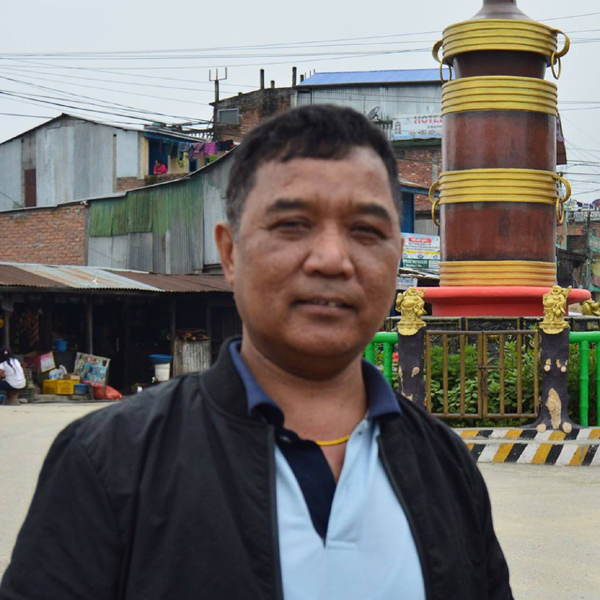Opinion
Punishable but pervasive
Incidents of child marriage in Nepal are widespread yet remain woefully underreported
Chun Bahadur Gurung
Frail Manju Mandal (name changed) who recently joined the Gender Based Violence (GBV) Watch Group formed by the government is the mother of seven children at the age of 27. She hails from Lalapatti, a tiny village in the Kshinnamasta rural municipality of Saptari. Manju is the daughter of a civil servant and was forced by her parents to marry a man whom she had never met. She was 14 years old when she ‘tied the knot’.
Manju was compelled to assume her role as a newly-wed daughter-in-law in a society deeply entrenched in the patriarchal structure. She was forced to face the consequences of being a child bride with no formal education, no economic opportunities, and a lack of sound health. She was not treated as a daughter, but rather as a baby-making machine.
In Dhanusha, I met a woman named Rashila Ram (name changed) crying during the screening of an anti-child marriage documentary. The documentary was a training tool used to highlight the causes and consequences caused by early and forced marriages. It depicted the tales of these child brides. “The documentary shown was so similar to what happened to me and I found myself sucked into it,” she said. Rashila was married when she was 12 years old. She was married into a household with a seriously ill mother-in-law who passed away a few months later. Now, her husband is suffering from a chronic mental disorder. And now, she is the only source of income for her family. She is responsible for taking care of her kids and her ailing spouse.
Far from the light
I had a chance to chat with Manju, Rashila and many others like them during a year-long anti-child marriage campaign by the Kathmandu-based organisation, Justice and Rights Institute-Nepal. The campaign was undertaken in close collaboration with the District Women and Children Offices in Saptari, Dhanusha, Rautahat, Doti and Bajhang.
The yearlong campaign was effective in bringing awareness to 930 women from the five districts mentioned above. These districts were identified as being most affected by child marriage. Almost 90 percent of the 930 women participants had been child brides and were facing challenges very similar to those that Manju and Rashila had to face.
Stories of those girls and women in far-flung villages remain untold and far from public attention. In these villages, child marriages are socially accepted. It is because there have been limited intervention efforts in such rural areas that the suffering of girls and women has still not been alleviated. Child marriage in Nepal remains pervasive.
Making good on pledges
A report by the Human Rights Watch titled Our time to sing and play: Child marriage in Nepal 2016, states that 37 percent of the girls in Nepal are married by the age of 18, and 10 percent of the girls in Nepal are married before the age of 15. This data is similar to those cited by other international agencies such as the United Nations Population Fund (UNFPA) and the Centre for Reproductive Rights (CRR). Such statistics indicate that child marriage is not pervasive, but they do not take into account those invisible marriages that remain far from the eye of the public and are yet undocumented. The law of Nepal has stated that marriage below the age of 20 is punishable, however, child marriage cases are seldom filed in the court of law. In fact, the annual report of the Attorney General (2070/71) states that only 20 such cases were filed in that year.
The government has made significant progress with respect to the ratification of international human rights conventions, including the Convention on the Rights of Children (CRC) and the Convention on the Elimination of all Forms of Discrimination Against Women (CEDAW). At the London Girls Summit in 2014, Nepal also pledged to end child marriage. It enacted the National Strategy to End Child Marriage 2015 following the formulation of the National Child Policy in 2012. At the operational level, the government has organised anti-child marriage training and continues to conduct school level campaigns.
Effectively implementing the National Strategy to End Child Marriage 2015 with the help of partners is a major way to bring an end to child marriage. However, the government has set a goal to end child marriage by 2030, which is an overly ambitious target. Multiple issues will have to be addressed if child marriage is to be brought to an end. Poverty, lack of education, and deeply entrenched patriarchal customs push families towards the arrangement of child marriages. These problems will all have to be addressed if child marriages are truly to be abolished.
Gurung works as an independent consultant (media, communication, research)




 9.12°C Kathmandu
9.12°C Kathmandu










%20(1).jpg&w=300&height=200)

